63 results
2 - Eastern and Western Writings up to the Ninth Century
- from Part I - To 900 ce
-
-
- Book:
- A Documentary History of Jewish–Christian Relations
- Published online:
- 03 October 2024
- Print publication:
- 17 October 2024, pp 65-112
-
- Chapter
- Export citation
1 - The New Testament
- from Part I - To 900 ce
-
-
- Book:
- A Documentary History of Jewish–Christian Relations
- Published online:
- 03 October 2024
- Print publication:
- 17 October 2024, pp 17-64
-
- Chapter
- Export citation
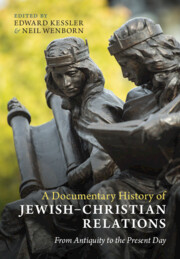
A Documentary History of Jewish–Christian Relations
- From Antiquity to the Present Day
-
- Published online:
- 03 October 2024
- Print publication:
- 17 October 2024
The Value of Christological Titles, in Conversation with Leander Keck
-
- Journal:
- New Testament Studies / Volume 70 / Issue 3 / July 2024
- Published online by Cambridge University Press:
- 30 September 2024, pp. 357-370
- Print publication:
- July 2024
-
- Article
-
- You have access
- HTML
- Export citation
3 - Christ on the Crooked Cross, Part II
-
- Book:
- Christianity in Hitler's Ideology
- Published online:
- 31 August 2024
- Print publication:
- 27 June 2024, pp 134-159
-
- Chapter
- Export citation
Conclusion
-
- Book:
- Christianity in Hitler's Ideology
- Published online:
- 31 August 2024
- Print publication:
- 27 June 2024, pp 234-242
-
- Chapter
- Export citation
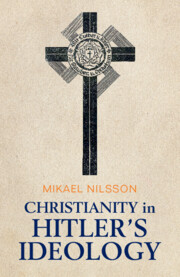
Christianity in Hitler's Ideology
- The Role of Jesus in National Socialism
-
- Published online:
- 31 August 2024
- Print publication:
- 27 June 2024
1 - Christ on the Crooked Cross, Part I
-
- Book:
- Christianity in Hitler's Ideology
- Published online:
- 31 August 2024
- Print publication:
- 27 June 2024, pp 32-84
-
- Chapter
- Export citation
5 - Jesus as an Ideological Inspiration for Hitler and the NSDAP
-
- Book:
- Christianity in Hitler's Ideology
- Published online:
- 31 August 2024
- Print publication:
- 27 June 2024, pp 180-233
-
- Chapter
- Export citation
Introduction
-
- Book:
- Christianity in Hitler's Ideology
- Published online:
- 31 August 2024
- Print publication:
- 27 June 2024, pp 1-31
-
- Chapter
- Export citation
4 - Hitler’s Damascus Road Experience
-
- Book:
- Christianity in Hitler's Ideology
- Published online:
- 31 August 2024
- Print publication:
- 27 June 2024, pp 160-179
-
- Chapter
- Export citation
2 - Hitler’s Religious Teachers
-
- Book:
- Christianity in Hitler's Ideology
- Published online:
- 31 August 2024
- Print publication:
- 27 June 2024, pp 85-133
-
- Chapter
- Export citation
Chapter 7 - Perfection and the Transfiguration
- from Part III - Transfiguration and Global Perfection
-
- Book:
- Human Perfection, Transfiguration and Christian Ethics
- Published online:
- 09 May 2024
- Print publication:
- 16 May 2024, pp 147-168
-
- Chapter
- Export citation
5 - Devotional Experience
-
- Book:
- Ways of Living Religion
- Published online:
- 07 March 2024
- Print publication:
- 14 March 2024, pp 180-224
-
- Chapter
- Export citation
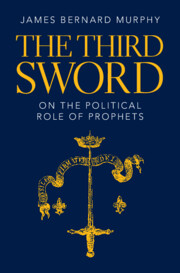
The Third Sword
- On The Political Role of Prophets
-
- Published online:
- 23 November 2023
- Print publication:
- 07 December 2023
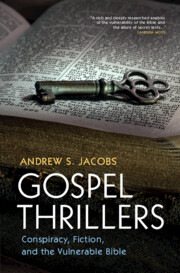
Gospel Thrillers
- Conspiracy, Fiction, and the Vulnerable Bible
-
- Published online:
- 09 November 2023
- Print publication:
- 30 November 2023
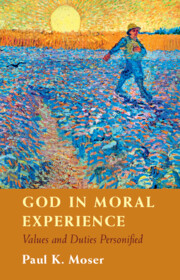
God in Moral Experience
- Values and Duties Personified
-
- Published online:
- 09 November 2023
- Print publication:
- 23 November 2023
Socrates’ Triple Accusation in Plato's Apol. 24b–c as a Source of Jesus’ Triple Accusation in Luke 23.2
-
- Journal:
- New Testament Studies / Volume 69 / Issue 4 / October 2023
- Published online by Cambridge University Press:
- 15 November 2023, pp. 472-475
- Print publication:
- October 2023
-
- Article
-
- You have access
- HTML
- Export citation
Theorizing about Christian faith in God with John Bishop
-
- Journal:
- Religious Studies / Volume 59 / Issue 3 / September 2023
- Published online by Cambridge University Press:
- 15 May 2023, pp. 410-433
- Print publication:
- September 2023
-
- Article
-
- You have access
- Open access
- HTML
- Export citation
The Agricultural Background of the Harvest Logion in Matthew 9.37–8 and Luke (Q) 10.2
-
- Journal:
- New Testament Studies / Volume 69 / Issue 1 / January 2023
- Published online by Cambridge University Press:
- 06 December 2022, pp. 57-75
- Print publication:
- January 2023
-
- Article
-
- You have access
- Open access
- HTML
- Export citation

